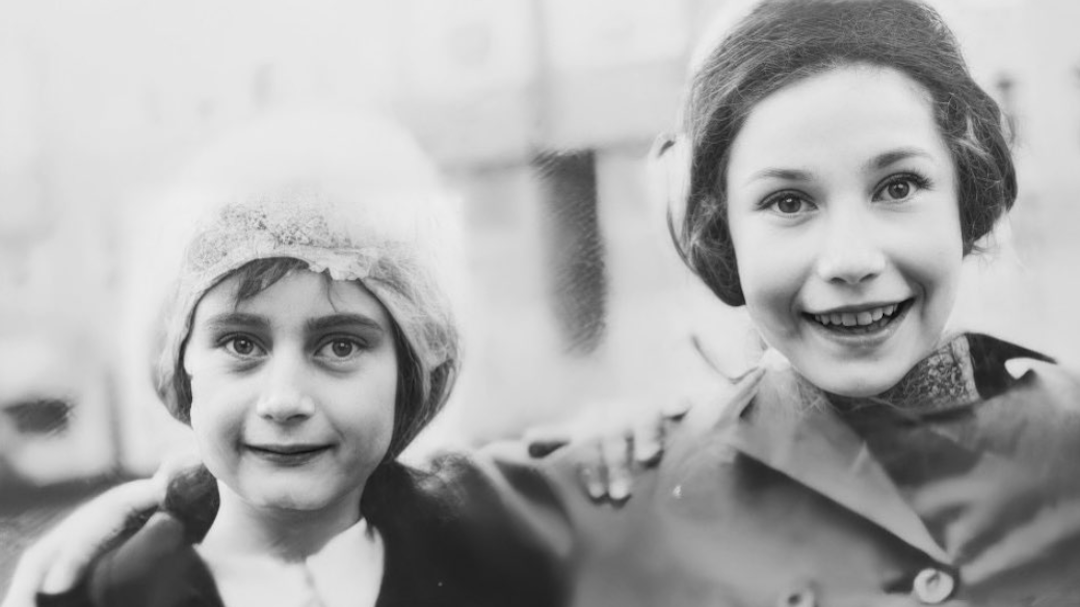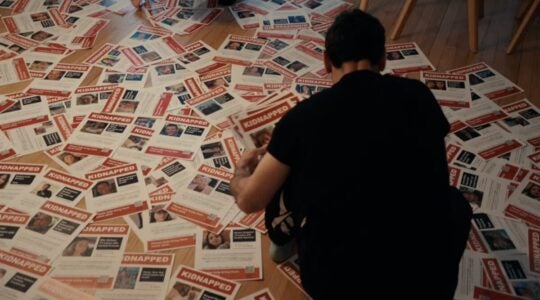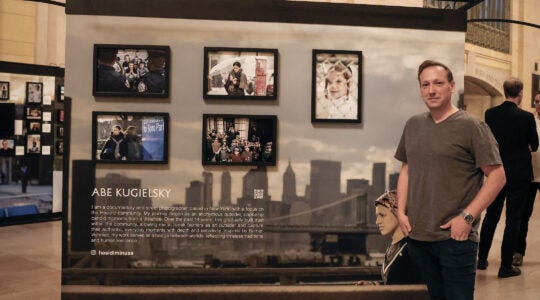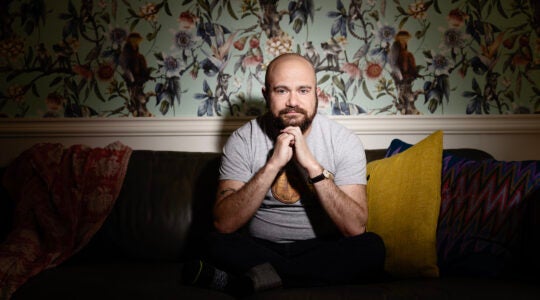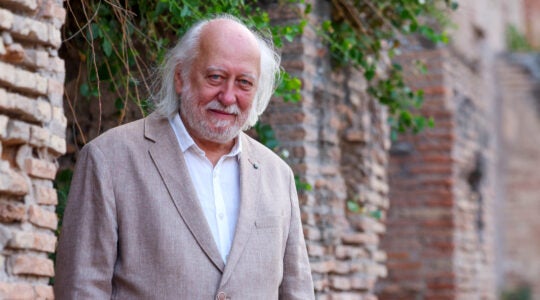(JTA) — One spring morning in 1934, two little girls followed their mothers to a corner grocery store in Amsterdam. The mothers, hearing each other speak German to their daughters, discovered they were both Jewish refugees who had recently fled Nazi Germany. The two girls peeked shyly at each other from behind their mothers’ skirts, one of them slight with dark, glossy hair, the other taller and fairer.
Those two girls were Anne Frank and Hannah Pick-Goslar. One was to become the most famous victim of the Holocaust, whose diary documented two years in hiding before the Nazis found her family and she perished at the Bergen-Belsen concentration camp at age 15. The other narrowly survived and made her way to pre-state Israel, eventually enjoying a new life that grew to include three children, 11 grandchildren and 33 great-grandchildren.
The day after their grocery store encounter, the girls recognized each other at the Sixth Montessori School in Amsterdam and became instant best friends. They could not predict that their final encounter would come 11 years later, against all odds, at Bergen-Belsen.
Pick-Goslar spent decades telling her story through interviews and lectures, but her recollections have only just been published for the first time in a memoir, “My Friend Anne Frank,” written with the help of journalist Dina Kraft. She did not live to see its publication on June 6: Pick-Goslar died in October, six months into writing the book and two weeks short of her 94th birthday, leaving Kraft to finish her account.
Kraft spoke with the Jewish Telegraphic Agency about the life of Pick-Goslar, who lived out the future stolen from her dear friend.
The conversation with Kraft, a onetime JTA reporter, has been lightly edited for length and clarity.
JTA: What was it like to tell Pick-Goslar’s story together with her?
Kraft: It was a remarkable experience being able to work with her. We had these very intense interviews where I was asking her to really dig back into her memory. A lot of Holocaust survivors, a lot of survivors of trauma, tend to tell their story — not on autopilot, exactly — but they have a script. It’s perfectly understandable, it’s a tool of self-preservation.
So I was asking her to dive deeper and look more intensely within, and that was not always easy. There were times we would finish the interview after a couple of hours and she would say, “I’m just exhausted, I need to lie down.” And I would say, “Me too,” because it was just exhausting — we were recounting very hard moments.
It got to the point where she would come in the morning and say, “I’m having bad dreams again,” and I would say, “Yeah, me too, I’m having bad dreams also.” Because it was so much of trying to step into her shoes and step into her mindset, and also reading very intensely — it was very much a research project too.
How did Pick-Goslar remember her childhood and friendship with Frank before the war?
She remembers life before the war as incredibly warm and loving. They were wrapped up in a supportive familial environment. Although both she and Anne were refugees from Germany, they came over very young — Anne was 4 and Hannah was 5.
Their parents had a hard time adapting, especially the mothers. Hannah’s mother was born and bred in Berlin, very much a creature of German culture. Her father was a high-ranking official in the Weimar government, so they lived very close to the Reichstag. On top of being horrified that they had just been kicked out of this country they viewed as home, Hannah’s family went back 1,000 years in Germany. So they were heartbroken about their country taking this terrible turn into darkness.
But for Hannah and Anne, it was a very nice life.
What kind of person was Frank, according to her friend?
She was very spunky. She had lots to say and she exhausted the adults around her. She was always challenging them, asking difficult questions, prodding, restless and impatient. The girls loved to play Monopoly, but Anne would get restless and walk off, which is frustrating for a friend! They would push back furniture in the house and do gymnastics together. Later on, when the Germans invaded and they only had other Jewish girlfriends to play with, they formed a club to play ping pong and go for ice cream.
Anne was such a know-it-all that Hannah’s mother had a phrase about her. She said, “God knows all, but Anne Frank knows better!”
But Hannah really saw her as a regular kid — she was just her friend, Anne Frank. She was not an icon of any kind, and she seemed more ordinary than she seemed extraordinary.
In July 1942, Pick-Goslar found her friend’s apartment empty. Like everyone else, she was told that the Franks escaped to Switzerland — not knowing they had actually gone into hiding nearby. What happened to Pick-Goslar while Frank went into hiding?
Hannah was deported a year after Anne went into hiding. In that year, she went back to school. The anti-Jewish laws meant that you couldn’t sit on benches, go to swimming pools, be on a tram, ride your bicycle — and you couldn’t go to school with non-Jewish children.
So Hannah and Anne were both fortunate to be accepted to the Jewish Lyceum, considered one of the more prestigious Jewish schools in Amsterdam under German occupation. But in the fall of 1942, the deportations had already begun. So every day there was a different student and friend missing from class, and different teachers and administrators missing. They never knew whether it was because somebody went into hiding or because they had been deported.
Another thing happened at this time. In October, when Hannah was 14 years old, her mother Ruth was pregnant. She was determined not to go to a hospital because there were rumors of people being deported directly from hospitals, so she gave birth at home with a Jewish doctor and Jewish midwife. The baby ended up being stillborn and Hannah’s mother died the next day.
As more and more Jews were deported, Hannah was protected for a while. Her family secured a pair of South American passports, and they were also on the so-called “Palestine list.” The idea was that eventually they would be part of a prisoner swap between the British and the Germans — German soldiers for “exchange Jews” who would be sent to Palestine, which was under the British mandate.
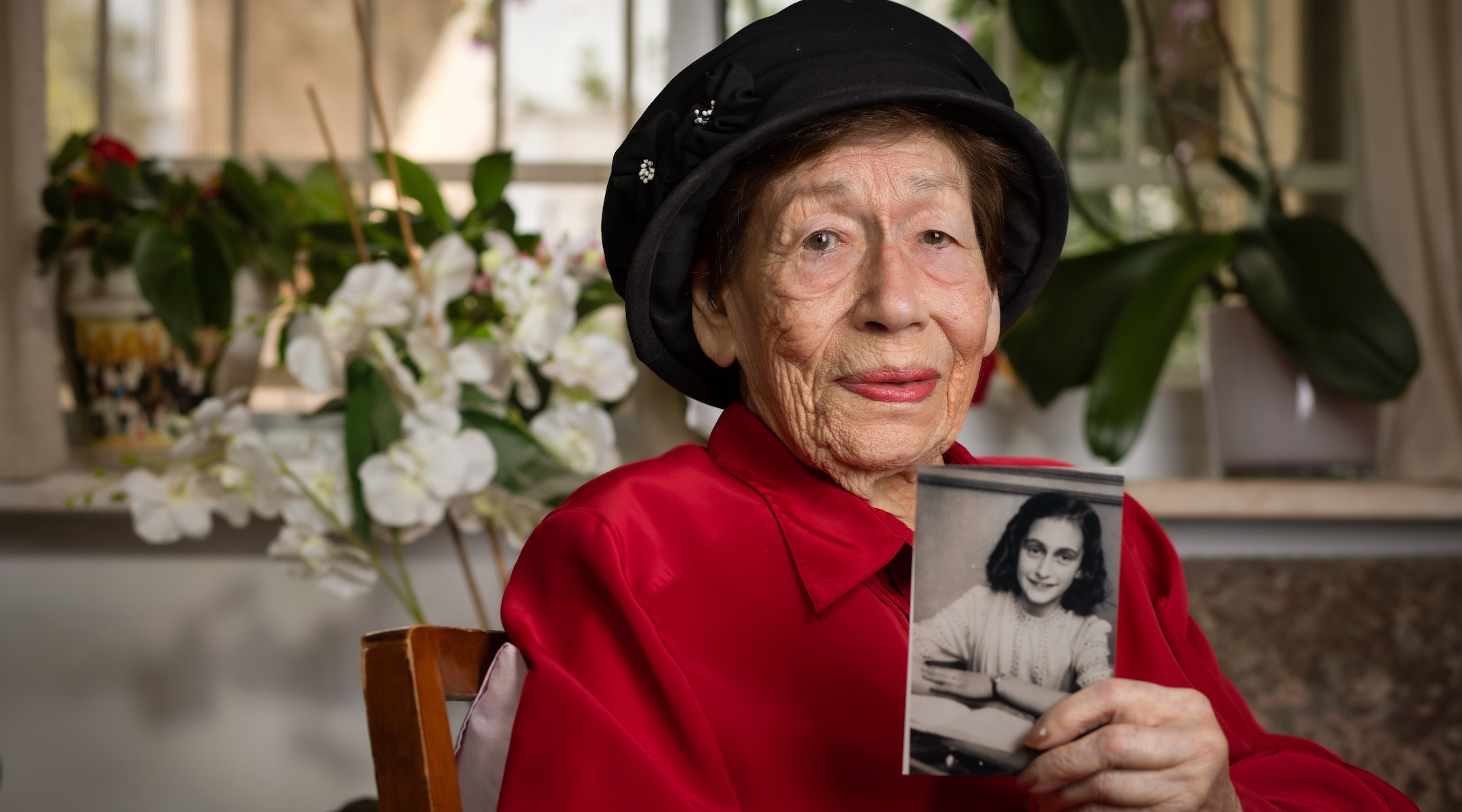
Pick-Goslar survived to have three children, 11 grandchildren and 33 great-grandchildren. (Eric Sultan/The Lonka Project)
So for a while, Pick-Goslar’s family believed they might be spared. How did she end up at the Bergen-Belsen concentration camp in northern Germany?
By the end, the Germans rounded up all the remaining Jews from Amsterdam, including those who had special stamps in their passports. By June 1943, Hannah’s family was in one of the final roundups of Jews in Amsterdam.
First they went to Westerbork, a transit camp in Holland on the border with Germany. It was basically a holding purgatory, and from there people were deported either to Auschwitz or Sobibor — in which they were almost certainly killed — or if they were luckier, to Theresienstadt or Bergen-Belsen, which were concentration camps but not death camps. Eventually, after several months in Westerbork, Hannah’s family was deported to Bergen-Belsen.
It was bearable in the first few months and they were still fed, though not much. But by February of 1945, the Russians were approaching in the east and the Germans were trying to move people from outer concentration camps into Germany. So Bergen-Belsen swelled to many times its size and became incredibly overcrowded. There was less and less food and water, and typhus started raging through the camp.
How did Pick-Goslar and Frank find each other again at Bergen-Belsen?
Around this time, a tent camp was erected across from Hannah’s part of the camp. People saw other women speaking different languages — Hungarian, Polish, Greek, and eventually Dutch as well. They were emaciated and skeletal.
The Germans forbade going out to talk at the fence and filled it with straw, so that people wouldn’t see each other anymore. But the women found a way to communicate, and word got to Hannah that Anne Frank was on the other side of the fence. Of course, she didn’t believe it, because the Frank family had left the impression that they were in Switzerland. But she decided to go find out for herself, even though it was extremely dangerous — you’d be shot if you went to the fence.
She crept up quietly and said, “Hallo, anybody there?” Then she heard a voice from across the fence, and by chance it was Auguste van Pels, one of the people who was in hiding with Anne’s family. She said almost casually, “Oh, you must be here for Anne,” and she brought Anne from the tent.
What were their last memories together?
Anne was coming from Auschwitz, so she was a broken shadow of her former self. She was freezing, starving and wailing that she was all alone in the world. She assumed that both of her parents were dead at this point. She didn’t know that just a week or two before, her father had been liberated from Auschwitz.
Imagine two girls on opposite sides of this fence — two very loved, coddled girls, who did not know deprivation, but now were completely in the throes of the worst days of the war, completely dehumanized and mistreated. There they were on opposite sides of this fence, best friends, sobbing.
Anne begged Hannah to bring her some food and Hannah said yes immediately, without knowing how she would get it. She said that she would come back in a couple of nights. And there was this amazing moment of female solidarity: The women in her barrack were so moved by the story of this reunion, they wanted to help — so from under a pillow here, hidden in a suitcase there, they gathered the little they had to give and put everything into a sock.
Out went Hannah again, a night or two later, to the fence. When she threw the sock over, she suddenly heard footsteps and then a scream — Anne had just lost the package to a fellow prisoner who took it out of her hands. She was distraught and couldn’t stop crying, but Hannah said, “Just stop crying, I’ll come back again with food.”
So she went back a few days later again with more food collected from her barrack. This time they triangulated better and Anne caught the package. That turned out to be the last time they ever met.
How did Hannah remember the end of the war?
At the very end of the war, the Germans forced everybody who could still walk at Bergen-Belsen onto a couple of different trains. These trains were meant to go to Theresienstadt, where they would be killed.
Hannah was put on a train with her little sister Gabi, whom she was trying to keep alive. It was a harrowing 13-day ride throughout the eastern German countryside. The people were very sick and starving, with no food or water for the journey. There was one especially awful moment when the man next to Hannah tried to spill his bowl of diarrhea outside the door of the train, but instead it splashed all over her.
She was so ill with typhus that she eventually passed out around day 13. When she woke up, people were already off the train. She asked what was going on, and someone said, “Don’t you know? We were liberated by the Russians.”
What did Pick-Goslar make of the tremendous legacy left by Frank’s diary? Did she feel that her friend was correctly understood?
For her, reading the diary was a revelation. She felt like she was sort of reunited with this old friend, which was a very powerful feeling, but also very sad. She saw a girl developing into a young woman whom she would still like to know. She was very grateful that Anne’s diary had been recovered, that so many people got to know her story, and that her diary became a gateway to learning more about the Holocaust.
I think she was a little upset by the sanitized version of Anne Frank. She spoke often about the famous passage in her diary, which is repeated and painted on walls and put on postcards: “In spite of everything, I still believe that people are really good at heart.” Hannah said that if Anne had survived the hell of Auschwitz and Bergen-Belsen, she did not think she would stand by that statement anymore. I think she was concerned about some level of oversimplification.
She was very gratified that Anne’s voice never died and still lives on through her words, but she also wanted people to have a richer and more contextual understanding of the slaughter of millions of people that was the Holocaust.
JTA has documented Jewish history in real-time for over a century. Keep our journalism strong by joining us in supporting independent, award-winning reporting.
